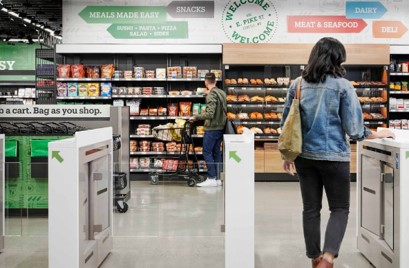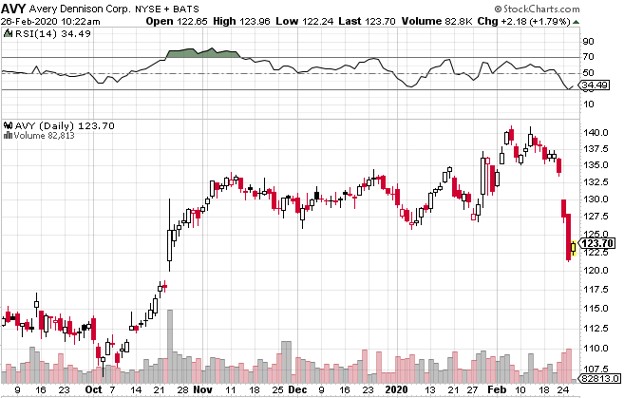RFID: Tiny Wonders Behind Friction-free Grocery Shopping
How cool would it be if you could get what you need from the local grocery store and just leave? No dealing with cashiers. No fuss.
Amazon.com (AMZN) has been fiddling with the idea since 2015. Now, it’s ready to open a grocery store in Seattle that promises the convenience of online shopping, in the real world.
It’s going to be a big win for a technology most people are familiar with but don’t think too much about.
We have all been there: You’re bringing Sara home from school, but you need to run into the grocery store to pick up a few things for dinner. You’re in a rush, as always. Filling your cart, then waiting in line to have your items scanned one-by-one, is a time-killer. Self-checkout is generally faster, when it works. But even then, nothing is “fast” with a young child in tow.
Go Grocery is a product built by Amazon for people in a hurry. It’s a 10,400 square foot store with groceries, baked goods, produce, beverages and easy-to-prepare meals.
It’s the kind of smaller, focused bodega-type grocery store you might find pinned at the corner of any urban block. What makes it unique, other than its Amazon branding, is its new-age convenience.
Amazon is renowned for its customer service. It’s a quality that helped the online retailer become one of America’s most trusted and beloved brands.
Managers understand that customers don’t want to fiddle with technology; they want it to solve problems. They want convenience. And that’s what they’ll find in an Amazon grocery store.
Customers will enter Go Grocery, scan a QR code that connects to their Amazon account, pick up the items needed, then leave. That’s it. All payment details and product tracking are handled in the background by cloud-based payment infrastructure and cameras. Lots of cameras.
Related post: Sony Could Check Out Big Profits with This Grocery Grab
There is one other key element. Amazon’s version of the automated checkout uses artificial intelligence and radio frequency identification, or RFID.
RFID tags have been around since 1948, when they were developed by Harry Stockman. Today, tiny RFID tags are used for everything from subway passes to livestock tracking. This technology is compact enough to be attached to labels and stickers.
It’s superior to simple barcodes because many RFID codes can be scanned all at once. The tags also work extremely well with inventory management systems.
When investors think of RFID, they usually gravitate to Impinj (PI). For 20 years, the Seattle company has been doing most of the heavy lifting to get RFID into the mainstream.
Inpinj makes digital tags, readers, gateways and enterprise management software to help retailers track items in real time throughout their supply chain and retail outlets.
However, there is a better RFID play: Avery Dennison (AVY). While Impinj trades cheaper, Avery Dennison has the leverage and market share to dominate this digital transformation.
The company is best known for making the labels used by the consumer products and packaging sectors. More recently, the California company has moved aggressively into RFID.
It acquired Smartrac, the world’s largest maker of RFID inlays used in ePassports, Last November. A month later, the company broke ground on a new manufacturing facility in Brazil. Avery Denison now controls more than 1,000 RFID patents and is well-positioned to leverage its relationships with leading consumer brands.
The company began a pilot program with Ralph Lauren in November 2019. Printed tags attached to the label inside shirts, pants and other garments contain a digital tag, according to a story published in Women’s Wear Daily. The tags give the clothing a purely digital identity that make inventory tracking and offering better post-sale customer experiences a snap.
The strengths of RFID also make it a natural fit for grocery stores. Items can be tagged and batch-read. This means the retailers knows exactly how many items are on shelves at all times with only one scan. This reduces waste and the labor costs associated with inventory and retagging.
Related post: How Amazon.com Remains the Ruler of Retail
Amazon is winning online retail by making shopping frictionless. Avery Denison is making digital products to make frictionless shopping a reality in the physical world as well.
Shares trade at 16x forward earnings and 1.4x sales. The stock is currently having a big correction.
It looks like a buy on this pullback for patient value investors.
Best wishes,
Jon D. Markman



